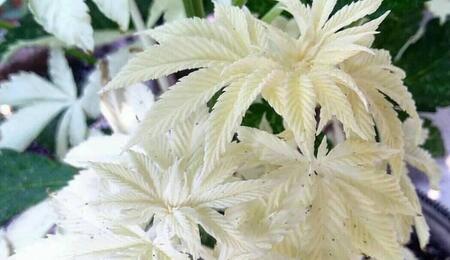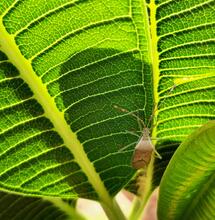The mystery of albino cannabis plants

Albinism is a genetic metabolic disorder characterised by reduced or even absent production of the pigment melanin. This pigment is responsible for the colouring of skin, hair, and eyes. But does albinism also occur in cannabis plants?
Albino plants do exist but, just like in humans, the condition is extremely rare. The reasons for this can be environmental conditions such as light and temperature. But genetic defects are even more crucial.
How do albino plants develop?
Albino plants lack chlorophyll. Chlorophyll is very important for plants because the pigment plays a key role in the process of photosynthesis. The process of photosynthesis is essential for a plant's growth and energy production. Furthermore, chlorophyll is also responsible for the green colour of plants, so albino plants are colourless. Because they can only perform very weak (if any) photosynthesis due to the lack of chlorophyll, the plant has little energy for growth or flower production. But that's precisely what the biological life cycle is all about.
These plants are therefore unable to reach maturity, simply because they cannot produce sufficient energy for growth and the necessary biological processes. IIn most cases, genetic mutations are responsible for such defects. These occur spontaneously or can be aggravated by selective breeding practices. Crossing different cannabis strains, also known as hybridization, results in a higher probability of genetic mutations, including those that can cause albinism. Hybridization is intended to enhance positive traits, but it can also have negative consequences. In very rare cases, an albino plant is produced.
There are also false albino plants. These are very pale plants, but this is not true genetic albinism. Plants can also bleach from too much light. Light bleaching is usually a result of the plants being too close to the light source. It is caused either by rapid upward growth or by incorrect positioning of the grow lights. Typically, the plant's canopy displays the white colouration caused by light bleaching.
The likelihood of growing an albino plant is very low. Whilst they may look interesting and be a novelty they definitely won't fulfil the purpose of growing cannabis plants in the first place.
More From Soft Secrets:
6 Signs of Top Quality Cannabis Buds - How to Identify Good and Bad Cannabis



.png)
